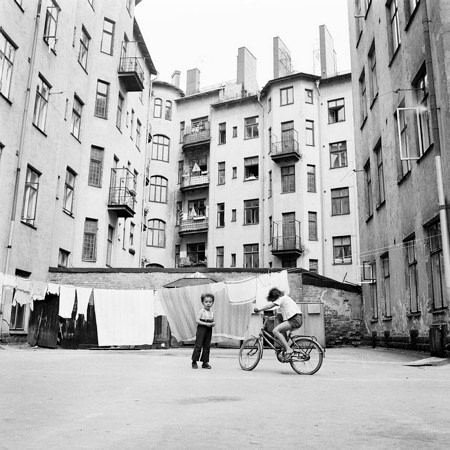
Keep up with our latest news and projects!

Helena Friman reflects on playing and upbringing between different generations: herself, her children and her grandchildren.
Helena grew up in the countryside and used to play in the forest, which offers terrain, trees, rocks and other natural elements that stimulate children’s senses and fantasy. It enables a space wherein children can create their own worlds; live their stories and use their bodies to build and replicate their experiences. To grow up in a city is quite different. It offers all sorts of interaction, experience and manmade constructions, however, it lacks the unpredictability of nature. All children like and actually need to play but, in contrast to nature, the artificial playgrounds in our cities offer very little inspiration and ways to develop. Helena often asks herself why we can’t have both. Why the cities grow without these elements side by side, is a question she knows the answer to: money and exploitation.
In retrospect, Helena isn’t aware of applying specific methods to the upbringing of her children; mostly she remembered and re-enacted her own childhood while she often talked to her mom and friends. Helena’s children, who now have children of their own, live in another era, where many young parents instead learn by reading or talking to their friends. The collectivistic spirit that Helena developed as part of the activist movements from 1968s is today replaced by individuality. The individual feeling is central in today’s parents’ life. On an abstract level, today’s parents engage in discussions regarding the food chain, climate change and animal well-being in relation to raising their children.
The schools and the preschool teachers are – or at least could be – agents of change, she believes. Nowadays, the schools are rather segregated; educating mostly children from the same socioeconomic class while schoolyards are designed to meet the parents and schools wish to reduce risk. Helena argues, firstly, that variety in cultures, classes and backgrounds can contribute to more tolerance and less sense of fear among parents. Secondly, schools should hold a stronger autonomy for keeping the schoolyard a place for children to play. Instead of diminishing the space or cut the bushes so that teachers and parents can keep an eye on the children at all times, schools should work for the possibility for children to use their fantasy, move, explore, and find secret places when playing. It must be possible to reduce risk and still encourage play in more inventive ways then what we see today.
This article belongs to a series of stories about the city at eye level for kids! You can access the full book online in PDF or pre-order your hardcopy to be delivered to your home.
Get your book here